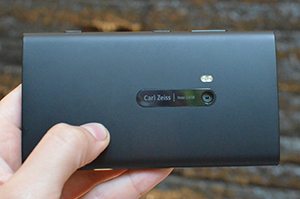Camera
Nokia stirred up a mini-controversy back in September when it announced the Lumia 920 would come with the same PureView branding as the 808 Symbian handset but without the corresponding 41-megapixel sensor. What does PureView mean, you might ask, if it doesn’t denote the earlier handset’s crazy oversampling technology? Stephen Elop’s answer was that the label represents the very best from the Finnish company’s imaging department, and while that might be a little bit of marketing doublespeak, there is some truth to it.
There are two major categories in which the Lumia 920 excels: low-light performance and image stabilization
The common thread between the PureView 808 and the 920 cameras is excellent image quality for those who know how to handle a high-end camera. Nokia’s newer device does have a few foibles you’ll need to be aware of, but if you are adept at handling its ideosyncracies, you can get amazing results.
There are two major categories in which the Lumia 920 excels: low-light performance and image stabilization. Both rely on what Nokia calls "floating lens technology." In a first for the mobile world, the entire optical assembly inside the 920 is suspended on tiny springs, which absorb and dampen the movements of your hand as you shoot. By reducing camera shake in this fashion, Nokia can afford to keep the shutter open for longer, absorb more light, and deliver much brighter pictures. That’s not going to eliminate all blur from your images, however, as moving subjects will still appear smudged if the picture isn’t taken quickly enough. Another thing I noticed is that camera shake can still make itself apparent in photos, even with this optical image stabilization — you’ll need steady hands to get the sharpest pictures from this device, particularly if you intend to use the physical shutter key.
Video recording is also a big beneficiary of the new floating lens, making for much steadier pans and allowing you to move around without destroying the quality of your video. The Lumia 920 isn’t going to compete with a dedicated camcorder in that respect, but it represents a significant step forward for cameraphones.
Low light pictures on the Lumia 920 not only appear brighter, they’re also well detailed and exhibit little noise. While photography purists will appreciate Nokia’s restrained post-processing — which may make photos appear muted in comparison to the typically oversaturated results you get from other phones — they’ll be less enthused about the 920’s automatic white balance. Taking three shots of the same scene can sometimes produce as many as three different color temperatures: a beige coffee table appeared rosy in one image, a greenish yellow in the next, and the perfect pale taupe in the third. This same issue is apparent during video capture as well, with the camera sometimes tinting the entire scene into a new palette as it determines a new color balance.
A legitimate criticism of Nokia’s 808 PureView camera is that while it can take amazing shots, it really requires the hands of a very knowledgeable user to pull them off. That same complaint applies to the Lumia 920’s camera as well. To most eyes, the images look a little washed out and don’t "pop," with not enough warm tones. A studied pro might say that they’re more accurate and true to life, but the vast majority of smartphone users don’t want to think about the nuances of optical imaging stabilization, they just want to take photos.
Nokia is also offering some software as exclusives to the Lumia line. The "Lenses" show up as options in the camera app, allowing you to launch custom camera apps directly and have their photos saved in the Photos Hub. "Smart Shoot" takes several photographs in succession and then has a post-processing mode that allows you to select the best shot and then cycle through faces to get rid of blinks. It produces good results so long as you hold the camera steady. "Cinemagraph" lets you create small animations just like the ones you can made with Cinemagram on iOS. The difference, unfortunately, is that Nokia hasn't built any way to actually share the animations, a completely perplexing foible in an otherwise neat feature





No comments:
Post a Comment